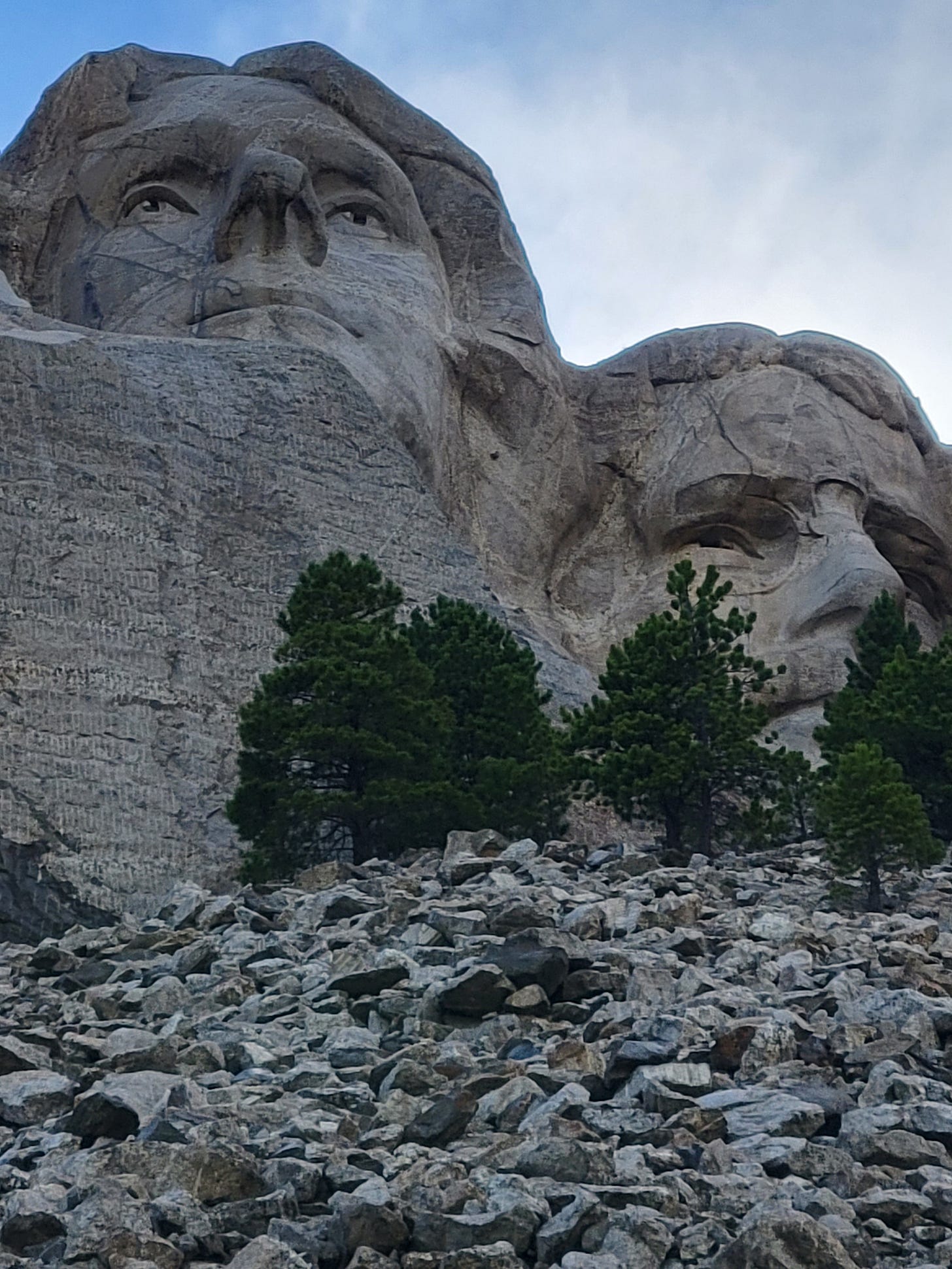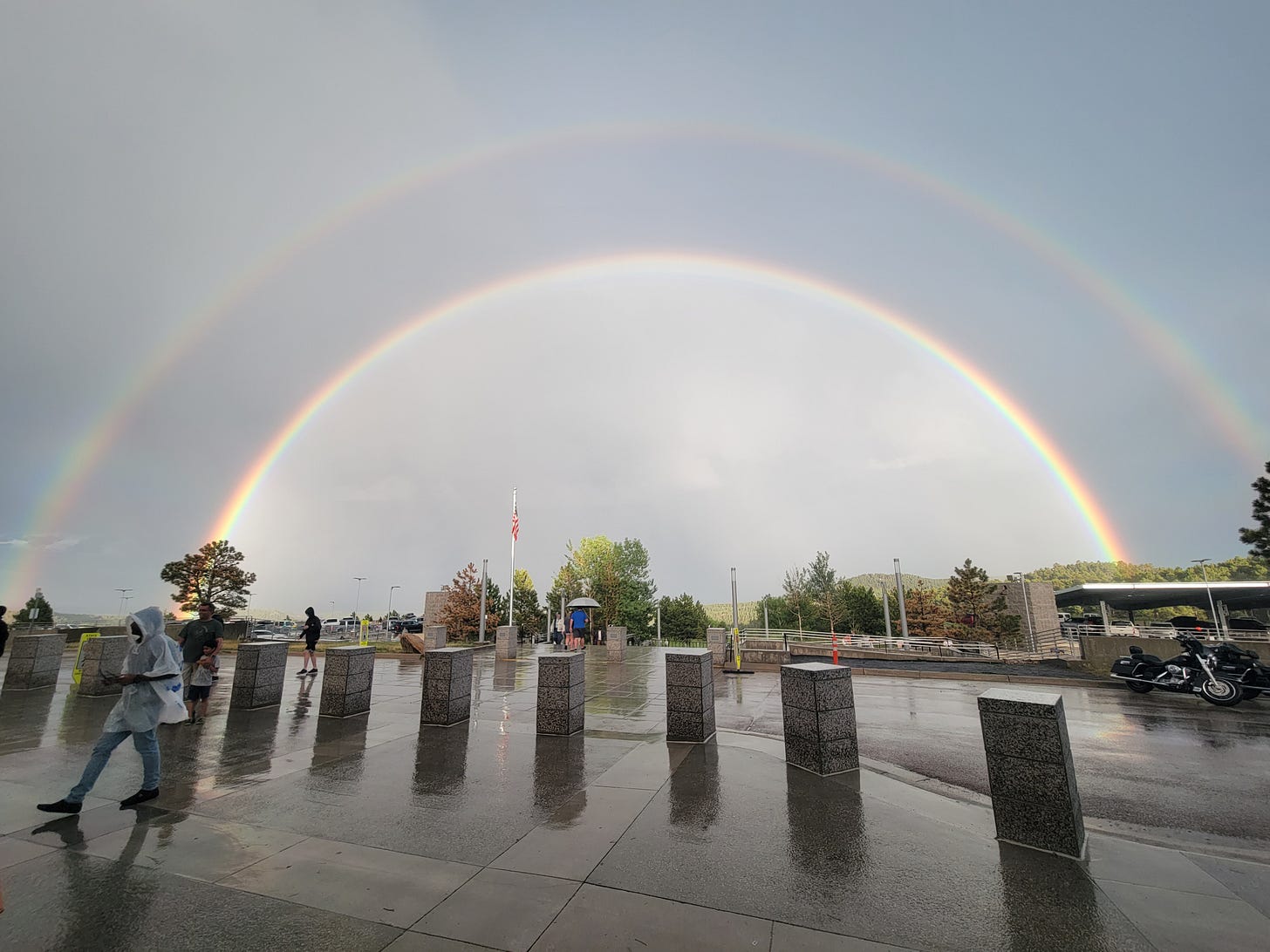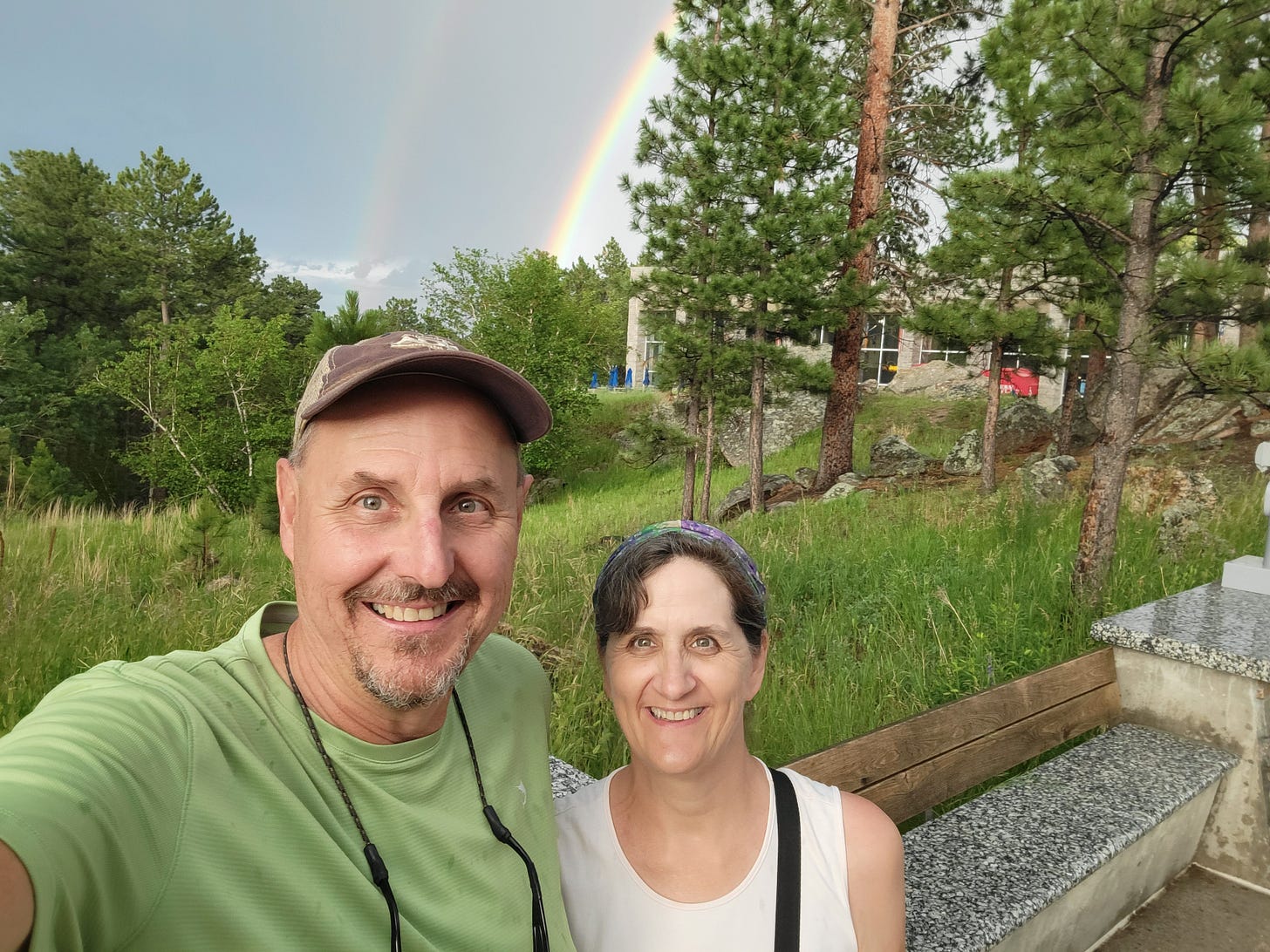It’s easy for one to think that Mount Rushmore National Monument is just some stone carvings. Boy, is that ever wrong! This introductory text from the NPS website does not overstate the significance and impact the site can have on visitors:
“Majestic figures of George Washington, Thomas Jefferson, Theodore Roosevelt and Abraham Lincoln, surrounded by the beauty of the Black Hills of South Dakota, tell the story of the birth, growth, development and preservation of this country. From the history of the first inhabitants to the diversity of America today, Mount Rushmore brings visitors face to face with the rich heritage we all share.”
We visited in the late afternoon, and took the Presidential Trail which meanders across the base of the mountain and directly underneath the carvings. Sculptor Gutzon Borglum selected four presidents to be memorialized on Mount Rushmore.
Washington was a natural first choice. He commanded the Continental Army during the Revolutionary War. Unanimously elected as our first president, he served two terms and laid the foundation for our nation.
Lincoln took office on the eve of our nation’s greatest trial, and devoted his presidency to ending the Civil War and preserving our union. Widely considered one of the greatest presidents, Lincoln was a favorite portrait subject for Gutzon Borglum.
Jefferson (below, left) was the principle author of the Declaration of Independence. As the third president, he spearheaded the purchase of the Louisiana Territory, doubling the size of the country.
Teddy Roosevelt (below, right) was the youngest man to become president, and was instrumental in negotiating the construction of the Panama Canal. Often called "the conservation president," Roosevelt impacted the National Park System well beyond his term in office, e.g. he championed conservation legislation setting aside millions of acres of public lands by signing legislation establishing five new national parks, as well as the Antiquities Act, which enabled Roosevelt and succeeding Presidents to proclaim historic landmarks, historic or prehistoric structures, and other objects of historic or scientific interest in federal ownership as national monuments. (And, coincidentally, he was a good friend and hunting buddy of sculptor Gutzon Borglum.)
We heard (one of the best ever!) ranger talks in the Sculptor’s Studio, detailing the history, the financing and the engineering that went into creating the carvings. And we spent time in the historical display at the rear of the amphitheater. Fun facts:
Original cost of the carving was $989K, 85% of which was federally funded.
Only 20 men worked on the carving operation at any one time, with 400 total workers being involved over the 6.5 years of construction.
450,000 tons of rock were blasted from the mountain.
There were 0 construction deaths.
A 1/12th scale model, constructed in the Scultor’s Studio, was used; carving on the mountain was done using exact measurements of the plaster model, scaled 12x (1 inch = 1 foot).
Noses are 20 feet long, eyes 11 feet wide, and mouths 18 feet wide.
The entire national monument is very well put together, with walkways well-maintained, informational displays having a new/crisp feel, the stone-carved amphitheater huge and with great sight-lines, and the Avenue of the Flags drawing one up to the prime viewing area for the monument. The patriotic vibe among the visitors was palpable.
A thunderstorm came through just as we were finishing, and left this wonderfully colorful double rainbow in the sky!









Wonderful post. As I was not paying attention in HS US History, I appreciated the overview of our most notable presidents and the MR sculptural fun-facts. And you both look fabulous!